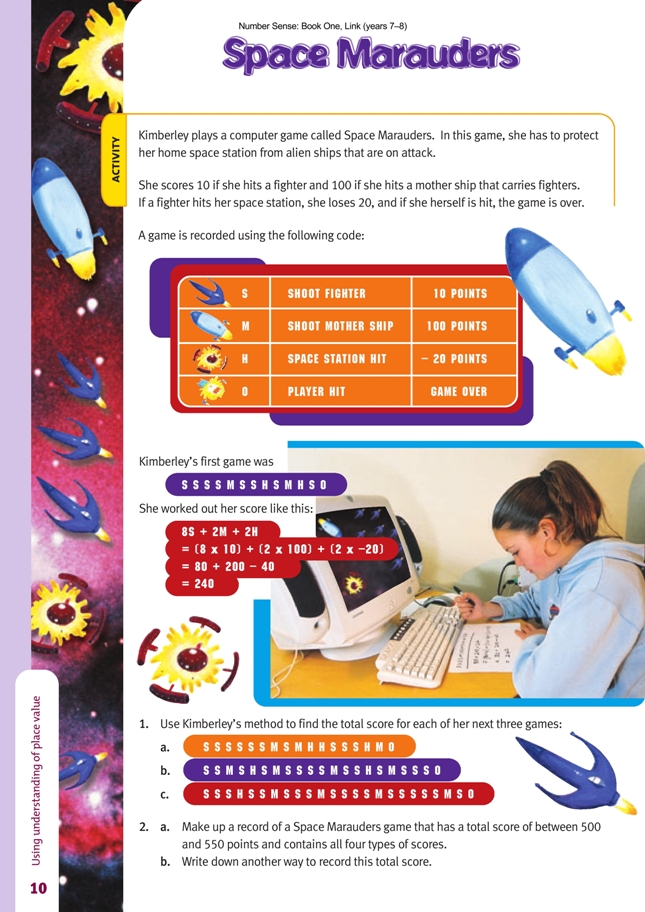This is a level 3 number activity from the Figure It Out series. It relates to Stage 6 of the Number Framework.
A PDF of the student activity is included.
Click on the image to enlarge it. Click again to close. Download PDF (646 KB)
use letter symbols in an equation
multiply single digits by 10 and 100
This activity will help the students to find efficient ways to add using the place value as well as the face value of the digits involved. It will also help them learn how to record equations using pronumerals and algebraic conventions.
After the students have read and understood the scoring system, work through the example of Kimberley’s first game to ensure that they have grasped the reasoning behind her recording system. This is a good opportunity to point out the algebraic convention for recording multiplication: “Kimberley’s 8S means 8 times
S.” Explain that in cases such as this, we do not usually record the multiplication sign as an x because it becomes confusing when other letters are being used to represent unknown or variable numbers (because unlike + and –, x is a letter of the alphabet as well as a symbol).
The other aspect that they should explore and discuss is the way that both the positive and negative quantities that belong in the H (hits) or tens column can be recorded and calculated. In Kimberley’s first game, the hits on the space station are recorded as + (2 x –20), which is then recorded as –40 after the calculation has been
done and the brackets have been removed.
Answers to Activity
1. a. 10S + 3M + 3H
= (10 x 10) + (3 x 100) + (3 x –20)
= 100 + 300 – 60
= 340
b. 14S + 4M + 2H
= (14 x 10) + (4 x 100) + (2 x –20)
= 140 + 400 – 40
= 500
c. 18S + 4M + H
= (18 x 10) + (4 x 100) + (1 x –20)
= 180 + 400 – 20
= 560
2. Records will vary. For example:
SSSSMSSMSSSMHSSMSSSSO (15S + 4M + H);
score: 530. Another way to get this score is an arrangement that includes 21S + 4M + 4H.
